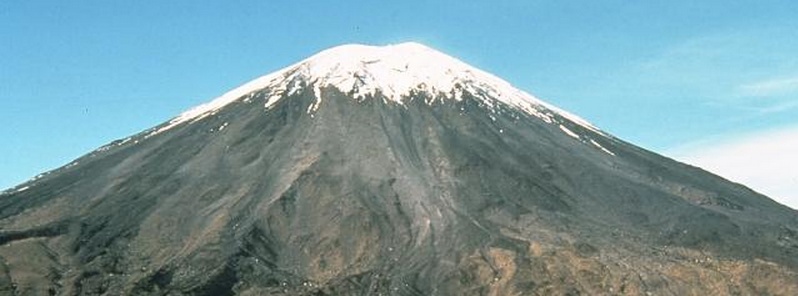Increased seismic activity detected around Ngauruhoe volcano, New Zealand

Seismic activity around Ngauruhoe, the highest peak of the Tongariro volcanic center, has increased above the typical background level, indicating minor volcanic unrest, GNS Science reports. The agency has raised the Volcanic Alert Level to level 1 (minor volcanic unrest) from 0 (no volcanic unrest). The last significant eruption at Ngauruhoe was in 1975.
During the last two to three weeks there has been an increase in the number and magnitude of earthquakes being recorded by the GeoNet seismographs around Mount Ngauruhoe. Initial analysis indicates these earthquakes are shallow, occurring at depths of less than about 5 km.
GNS Science duty volcanologist Art Jolly writes:
"Earthquakes are not unusual near Ngauruhoe, but it is some time since we last recorded significant numbers or events above magnitude 1. Similar numbers, but smaller events occurred in December 2014. Other swarms of earthquakes near Ngauruhoe occurred in 1983, 1991, 1994, 1995 and again between 2006 and 2010, but otherwise Ngauruhoe usually has little earthquake activity.
The Volcanic Alert Level was raised to Level 1 in June 2006 and then lowered to Level 0 in December 2008 in response to the earthquake activity at that time. No other parameters we measure at Ngauruhoe (gas, temperature) changed during these times.
The current change at Ngauruhoe indicates the volcano has entered a state of volcanic unrest, like we have recorded several times in the last 30 years. No previous periods of unrest have resulted in a volcanic eruption. The outcome of this unrest is more likely than not that there will be no eruption in the short term, like during the 2006-2010 unrest.
We continue to monitor Ngauruhoe closely and will release updated information as it is available or necessary."
The Volcanic Alert Level ranges from 0 to 5 and defines the current status at a volcano.
The Aviation Colour Code for Ngauruhoe is Green. Aviation Colour Codes are based on four colours and are intended for reference only in the international civil aviation community.
Geologic summary
Tongariro is a large andesitic volcanic massif, located immediately NE of Ruapehu volcano, that is composed of more than a dozen composite cones constructed over a period of 275,000 years. Vents along a NE-trending zone extending from Saddle Cone (below Ruapehu volcano) to Te Mari crater (including vents at the present-day location of Ngauruhoe) were active during several hundred years around 10,000 years ago, producing the largest known eruptions at the Tongariro complex during the Holocene.
North Crater stratovolcano, one of the largest features of the massif, is truncated by a broad, shallow crater filled by a solidified lava lake that is cut on the NW side by a small explosion crater.
The youngest cone of the complex, Ngauruhoe, has grown to become the highest peak of the massif since its birth about 2500 years ago. The symmetrical, steep-sided Ngauruhoe, along with its neighbor Ruapehu to the south, have been New Zealand's most active volcanoes during historical time. (GVP)
Featured image: Ngauruhoe volcano. Credit: USGS (1984)

Commenting rules and guidelines
We value the thoughts and opinions of our readers and welcome healthy discussions on our website. In order to maintain a respectful and positive community, we ask that all commenters follow these rules.